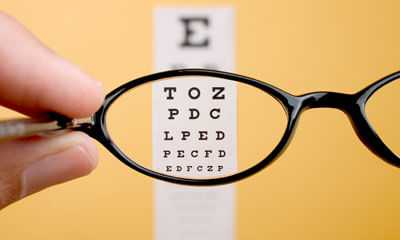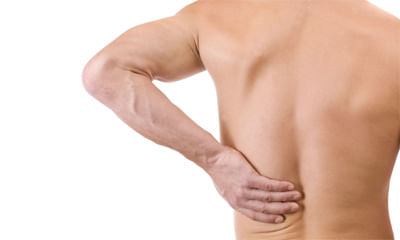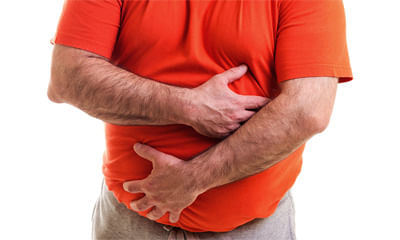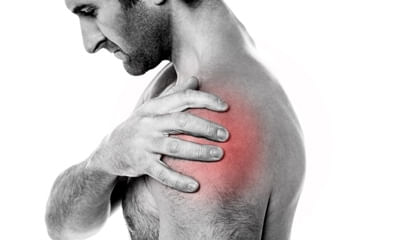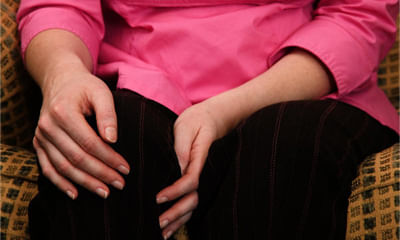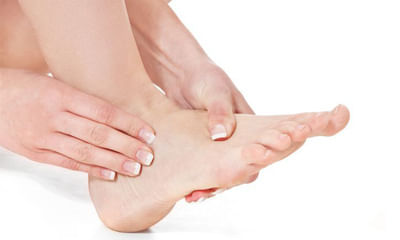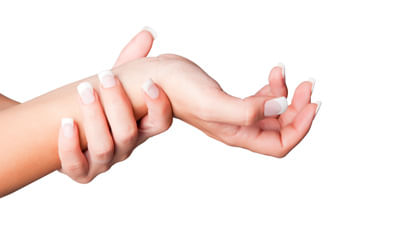Feeling Numb After Drinking
Mere papa ko back pain ho rha hai acidity ya kuch aur nhi pata ek baar doctor se consult karke laye the acid problem keh ...
Ask Free Question
Back pain exercises; kindly do these exercises. Back pain is described as acute or chronic based on how long you’ve had it. Acute pain lasts days to weeks, subacute pain lasts six weeks to three months, and chronic pain lasts longer than three months. Things that make it better or worse back pain may get worse with movement or if you sit or stand for a long time. It may get better if you switch positions or walk around. Other symptoms you may experience with back pain include: •the painful spot looking swollen and feeling tender to the touch •a muscle spasm in the painful area •numbness or weakness in one or both of your legs (if the pain is due to a nerve issue) if you find you have back pain and can’t hold your urine or bowel movements, something is pressing on your spinal nerves, and you should be evaluated immediately. This condition, called cauda equina syndrome, can cause severe long-term damage to your spinal nerves if not treated right away. 6 imbalances that cause pain—and how to fix them "pain is a medical condition and a medical issue, says brett jones, owner of applied strength in pittsburgh who is certified for the functional movement screen, a system of tests and cor rective exercise strategies. "it's a warning sign. The pain is there to tell you something's wrong. And that warning sign could be more serious than "you're going too hard. Jones and the other coaches consulted for this piece all had a horror story to tell-when pain in a client meant a more serious condition such as a nerve issue, thyroid issue, or even cancer. The point: if you experience regular pain while exercising-or when you're not-go to the doctor. If you've been cleared by a doc and you're still feeling discomfort, try these simple tests to see what's truly causing the pain-it could be related to an imbalance in a completely different part of your body. The good news: with these drills, stretches, and corrective exercises, you may be able to fix them-no doctors necessary. 1. Standing extension how it helps – this standing extension helps reverse what you do on a daily basis (hunching)… since most bulging discs and herniated discs are caused by poor posture and repeated flexion of the spine (esp bending fwd in bad posture), this stretch helps push the disc back to neutral position. How to do it – begin this exercise by standing up with good posture. Now take both hands and place them on both sides of your lower back. Now with the help of your hands push your pelvis forward and extend your spine back. Follow the extension with your neck so that you end up facing the ceiling. – start with 10 repetitions and do 2-3 sets. – this one is particularly great to do when you need a break from sitting at your desk. ** this should not cause any pain. If you feel pain during it is not a good one for you. In that case, stop and try some of the other exercises below instead. 2. Half cobra pose (prone lumbar extension) how it helps – the half cobra stretch helps to push the disc material back towards the center of the inter-vertebral disc to allow for improved healing. The goal of repeated lower back extension is the “centralization of symptoms”, which basically means pain that travels down the affected leg to the foot should come back up closer to the low back – which will in turn alleviate the pain. How to do it – begin this exercise by lying on your stomach (prone position) and slowly prop yourself up on your elbows while keeping your hips in contact with the floor. – hold the prop-up position for 10-15 seconds before returning to the prone position (lying face down). – gradually increase to holding the end position for 30 seconds. Aim for 10 repetitions of this stretch. ** initially, you may not be able to tolerate this position very well, so make sure you start slowly and carefully. If there’s any pain, try a different exercise instead. 3. Full cobra pose (advanced extension) how it helps – this stretch is based on the same principle as the half cobra pose above. This advanced extension helps to push disc material back towards the center of the intervertebral disc, with the goal of alleviating pain symptoms. How to do it – once you’ve mastered the half cobra pose, you can increase the difficulty by moving to the advanced version of this stretch. Begin this exercise by lying on your stomach in the prone position (lying facing down) and slowly press up on your hands while keeping your pelvis in contact with the floor and lower back relaxed. – hold the prop-up position for 10 seconds. Aim for 10 repetitions of this stretch. – eventually try to hold this pose for longer if it feels good (20-30 seconds). ** if you feel pain during this exercise, it is not a good one for you. In that case, stop and try some of the other exercises instead. 4. Cat-cow how it helps – this is one of the most popular herniated disc exercises. By combining two yoga poses, the cat-cow stretch can help to relieve pressure on the herniated disc by opening the intervertebral disc space. It also improves mobility of the spine, which may help to relieve disc herniation pain and speed recovery. How to do it – begin this stretch on your hands and knees. Inhale and let your stomach “drop” towards the floor as you look up towards the ceiling. – follow this by exhaling and slowly rounding your spine while pressing into the floor with your hands and slightly curving your neck to look at your feet. – aim for 10 repetitions of this stretch and do 2-3 sets. How it helps – this exercise will help strengthen and stabilize your lower back and deep spine muscles. This will help you to maintain a good posture and avoid future episodes of herniated discs. How to do it: – begin on your hands and knees with your hands positioned under your shoulders and knees positioned under your hips. – raise your left arm and reach it forwards until it is aligned with your torso; at the same time, kick your right leg backwards until is it aligned with your torso. – hold this position for 2-3 seconds before slowly returning to the starting position. – repeat with your right arm and left leg. – alternate sides for 10 repetitions and do 2-3 sets. ** ensure that your head, neck, and back maintain a neutral alignment to minimize stress on your neck. 5.plank: how it helps – just like the bird dog, this “core” exercise will help bring your pelvis into right position by strengthening the deep spinal muscles and glutes (butt muscles). How to do it – begin lying on your stomach with your forearms against the mat. – engage your core and lift your body so that you are resting on your forearms and toes. – start with 10 second holds and work up to 30 second holds, do 2-3 sets. ** ensure to keep your back straight throughout the entire exercise – spine in neutral position. Thoracic expansion if you’re using a chair, sit facing forward and allow your upper body to fall over the back of the chair. Extend your arms above your head for a deeper stretch. Hold either position for 10 seconds. 1. Plank the world record for the longest plank is 8 hours. Luckily, you don’t need to hold it that long for the exercise to have an effect! in fact. You can hold it for 10-15 seconds. • the plank is similar to a push-up position, but instead of resting on your hands, you rest on your elbows and bring them directly underneath your chest. • after kneeling, lean forward and place your elbows on the ground directly below your shoulders. • lift your knees off of the floor and push your feet back. Ensure your back is straight and keep your neck aligned with the rest of your spine. • hold the position and tighten your core muscles for the desired time. 2. Side plank just like the original plank, but only balancing on one side. • lie on the floor on your side, facing sideways with your feet together. • lift up your body until you are supporting yourself with your elbow, directly below your shoulder. • raise your hips until your body is in a straight line and tighten your core muscles; your body should create a slant from your shoulders to your feet. • hold this position without dropping your hips. • repeat on the opposite side. 3. Pelvic tilt with exercise ball sit on a ball that allows your legs to be at a 90-degree angle with your feet flat on the floor. • keep your shoulders back and spine straight. • tilt your hips forward and flex your abdominals tight. • tilt your hips backward as you stick your tailbone out. • move back and forth slowly, keeping your shoulders back. • repeat 10 times for 3 sets. 4. Superman lie on your stomach, face down, with your arms out in front of you. • lift arms, legs, and chest off the floor simultaneously while keeping your hips grounded. • hold for a minimum of two seconds. • lower back down slowly. • repeat 10 times for 3 sets. 6. Crunches lie flat on your back, placing your feet flat on the floor with your legs bent. • fold your arms across your chest and lift your torso up until your head, neck, and torso are off the ground. • hold for a moment before lowering back down. • repeat. 6. Quadruped arm opposite leg raises • kneel on the floor, lean forward, and place your hands palm-down on the floor. • make sure your back is straight, your knees are below your hips, and that your palms are directly below your shoulders. • raise one arm as you raise the opposite leg until both are aligned straight out from your body, parallel to your spine.
I am 26 years old male. I have tired of my health issues and fed up of visiting one doctor to another. I have problem of ...
Ask Free Question
Get your thyroid profile, cbc, blood sugar fasting checked from some lab. I need details of the case. In the meanwhile follow this1. Take your breakfast every day. Don't skip it. U should eat whatever your mother or grandparent eat in bfast. I mean to say whatever is your traditional food. If punjabi eat paratha, if belongs to south then take idli/ dosa etc. 2. Don't overeat 3. Don't take tea empty stomach. Eat something like a banana (if you are not diabetic) or any seasonal fruit or soaked almonds and a glass of plain water first thing in the morning (preferably within 10 mins of waking up). No only biscuits or rusk will not do. 4. Have light meals every 2 hours (in addition to your breakfast, lunch n dinner) e.g. Nariyal paani, chaach, a handful of mixed dry fruits, a handful of peanuts, any fresh n seasonal fruit (eat whole fruit not juice), a cup of curd/milk etc 5. Take simple food like rice n dal in dinner. Finish your dinner at least 2 hours before going to sleep. 6. Maintain active life style7. Avoid fast foods, spicy n fried foods, carbonated beverages 8. Take a lot of green vegetables n fruit. 9. Drink lot of water.10. Everyday preferably sleep on same time 11. Take 1tsp of ghee in bfast, lunch n dinner.
I am nozimul I am 21 year old I have been feeling pain on my back near kidney from many days and I also felt burning on ...
Ask Free Question
Kidney pain vs. Back pain because your kidneys are located toward your back and= underneath your ribcage, it may be hard to tell if the pain you’re experiencing in that area is coming from your back or your kidney. The symptoms you’re having can help you figure out which is the source of the pain. The location, type, and severity of the pain are some of the things that will be different depending on whether the pain is from a problem in your kidneys or your back. How to identify kidney painkidney pain is most often caused by a kidney infection or a stone in the tubes coming out of your kidney. If the pain is coming from your kidney, it will have these features: where the pain is located kidney pain is felt in your flank, which is the area on either side of your spine between the bottom of your ribcage and your hips. It usually occurs in one side of your body, but it can occur in both sides. Type of pain kidney pain is usually sharp if you have a kidney stone and a dull ache if you have an infection. Most often it will be constant. It won’t get worse with movement or go away by itself without treatment. If you’re passing a kidney stone, the pain may fluctuate as the stone moves. Radiation of the pain sometimes the pain spreads (radiates) to your inner thigh or lower abdomen. Severity of the pain kidney pain is classified according to how bad it is — severe or mild. A kidney stone usually causes severe pain, and the pain from an infection is usually mild. Things that make it better or worse typically, nothing makes the pain better until the problem is corrected, such as by passing the stone. Unlike back pain, it usually won’t change with movement. Accompanying symptoms if you have a kidney infection or a kidney stone, you may also experience: •fever and chills •nausea and vomiting •cloudy or dark urine •an urgent need to urinate •pain when you urinate •a recent infection in your bladder •blood in your urine (this can happen with an infection or kidney stones) •small kidney stones that look like gravel in your urine how to identify back pain back pain is more common than kidney pain and is usually caused by a problem in the muscles, bones, or nerves in your back. Has the following features: where the pain is located back pain can occur anywhere on your back, but it’s most commonly located in your lower back or one of your buttocks. Type of pain muscle pain feels like a dull ache. If a nerve has been injured or irritated, the pain is a sharp burning sensation that may travel down your buttock to your lower leg or even your foot. Muscle pain may affect one or both sides, but nerve pain usually only affects one side. Radiation of the pain nerve pain may spread to your lower leg. Pain from a muscle usually stays in the back. Severity of the pain back pain is described as acute or chronic based on how long you’ve had it. Acute pain lasts days to weeks, subacute pain lasts six weeks to three months, and chronic pain lasts longer than three months. Things that make it better or worse back pain may get worse with movement or if you sit or stand for a long time. It may get better if you switch positions or walk around. Accompanying symptoms other symptoms you may experience with back pain include: •the painful spot looking swollen and feeling tender to the touch •a muscle spasm in the painful area •numbness or weakness in one or both of your legs (if the pain is due to a nerve issue) if you find you have back pain and can’t hold your urine or bowel movements, something is pressing on your spinal nerves, and you should be evaluated immediately. This condition, called caudaequina syndrome, can cause severe long-term damage to your spinal nerves if not treated right away.
Respected doctor. My son age 14 years .he is feeling numb like (sunn ho jana) on his left side of stomach from rib to do ...
Ask Free Question
Numbness and pain in the left side of the stomach can be caused by a variety of conditions. One possibility is that it could be related to gastrointestinal issues, such as gas or constipation. It is important to ensure that your son is maintaining a healthy diet and staying well-hydrated. Encourage him to eat a balanced diet rich in fiber, and to avoid foods that may cause gas, such as beans, broccoli, and carbonated drinks. Another possibility is that the symptoms could be related to a musculoskeletal issue, such as a muscle strain or sprain in the left side of the abdomen. This could cause pain and discomfort, especially when bending or twisting the body. It is also important to consider the possibility of neurological issues, such as a pinched nerve in the spine or a herniated disc. This can cause numbness and pain in the affected area, as well as radiating pain in other parts of the body. I would recommend consulting with a healthcare provider to determine the underlying cause of your son's symptoms. The provider may recommend further tests or imaging studies, such as an mri or ct scan, to help identify the source of the problem. In the meantime, encourage your son to maintain a healthy lifestyle and avoid any activities that exacerbate his symptoms.
Hi sir, pradeep here form bangalore, I am currently 33 years old unmarried with no peace in life for the past 8 months d ...
Ask Free Question
Answer—i have gone through your details of health problems -- having stress regarding physical symptoms ; fits; palpitations ; gastro-intestinal and neuralgic type of symptoms –with anxiety –are your health problems--in this background you requires treatment including sessions by psychiatrist—psychologist—psycho-social worker team ; cardiologist ; gastroenterologist and neurologist along with efforts from your side for lifestyle changes as described below- from your explanation --i feel that your problems are related to stopping medicines at your own level with out advice from the docyor ---especially for fits ;uncontrolled and irregular daily schedule of activities ---with anxiety and desire for achieving targets and overstrain and overwork ----all these leading to palpitation ;depression ; stomach upset; neuralgia etc. So your treatment is to start with lifestyle changes ----- you make a healthy schedule of daily activities with correct timings for sleeping; working ; eating ; entertainments ; exercise ;yoga ; meditation ; prayers ; social and religious activities and then -- strictly follow the schedule --- booster your mental health by increasing positive mental energy by 1-convincing yourself that you have no major cardiac or deadly disease and there are people around you who are suffering more than you and need your help – like poor cancer; kidney patients. Still some of them are always smiling ; helping; supporting ; encouraging and appreciating others upto their last breathe —read stories of such people –which are coming in media and you try to do the same--- to your family members; neighbors ; colleagues –and poor patients in cancer wards etc -- ----- 2---reduce your negative mental energy like anger ; anxiety ; fear ; depression ; jealousy ; selfishness etc. By being philosophical about our momentary journey of-life--- of maximum 40000 days --in this beautiful world --where we forget to enjoy the good things-- due to our passion for sincerity ;over anxiety about own health ; status etc and greed for possessions ; selfish interests etc. -- just smile and try to make happiness to your fellow passengers like your parents; wife; children ; neighbors; colleagues and try to forget your health problems --at least for few hours daily & accrue positive energy in your soul ---which is one of the best medicines for your problems and the only item which we can take from this world ---when we are going finally.mobile so you make a diary of your good and bad deeds daily and make sure that the good deeds are more every day -----you sleep --only after making this diary notes --you tabulate your monthly balance and see that it is positive --- --- now let us look at your daily food menu --- take about 300 gm of fresh vegetables and glv and fruits before your lunch and dinner daily as fresh salads or fresh juice. Drink 12-14 glasses of water /fluids daily / restrict oily; fried ; fatty ; junk ; fast food items and avoid colas; alcohol ; tobacco and drugs and take maximum ethnic vegetarian food // take food in small quantity at frequent intervals // don't take food during your screen time // take your dinner before 8 pm //restrict your food in dinner parties and lunch parties / // restrict your screen time to 3 hours daily // if you are a computer professional ---take 5 minutes of rest every 1 hour at computer --go round in office --chit chat or look at distance -wash face and come back to work ---- sleep for 8 hours daily --that also at fixed timings --if your work permits // have any type of entertainment for 1 hour daily // keep regular fixed time for passing stool -twice daily ; passing urine every 3-4 hours; brushing teeth twice daily and taking bath twice daily. Do exercise for 30 minutes daily --like walking; cycling; swimming etc. // do yoga; pranayama ; meditation for 20 minutes daily //have prayers for 20 minutes daily --if you are a believer. After starting a daily schedule of your activities with the above advice and continuing for 2 months --you assess-- by yourself-- about the health problems still remaining ---like palpitation ; fits ;anxiety etc and go to a good hospital like cmc; vellore ----meet a group of good psychiatrist—psychologist – psycho social worker team; cardiologist ; gastroenterologist ; neurologist as per your main problems--- take treatment as they instructs and continue the new lifestyle which you have strated 2 months ago ---as detailed above -- --thank you for your question ----which explains the problems of many people at present----.wish you all the best.
I am suffering from intermittent pain below my right rib cage, pain is high while getting up from bed, but after startin ...
Ask Free Question
Cold compresses can help reduce swelling in the area. Cooling also helps to numb sharp pain. Apply an ice pack for up to 20 minutes, up to five times a day. Use a frozen gel pack, ice cubes in a plastic bag, or a bag of frozen peas. Wrap the cold pack in a soft towel. Do not apply a cold pack directly to skin. Heat therapy heat helps to relax tense muscles and soothe a stiff area. It can help with muscle pain and bonny pain. Use a heated gel pack, heating pad or a hot water bottle.
Im feeling numbness and tingling all over the body frequently. And recently im getting electric shock sensation when I t ...
Ask Free Question
Get your thyroid profile, cbc, vit b12, blood sugar fasting checked from some lab. In the meanwhile follow this 1. Don't take tea empty stomach. Eat something like a banana (if you are not diabetic) or any seasonal fruit or soaked almonds and a glass of water first thing in the morning (within 10 mins of waking up). No only biscuits or rusk will not do. 2. Don't overeat 3. Take your breakfast every day. Don't skip it. U should eat whatever your mother or grandparent eat in bfast. I mean to say whatever is your traditional food. If punjabi eat paratha, if belongs to south then take idli/ dosa etc. 4. Have light meals every 2 hours (in addition to your breakfast, lunch n dinner) e.g. Nariyal paani, chaach, a handful of dry fruits, a handful of peanuts, any fresh n seasonal fruit, a cup of curd/milk etc 5. Finish your dinner at least 2 hours before going to sleep. 6. Maintain active life style7. Avoid fast foods, spicy n fried foods, carbonated beverages 8. Take a lot of green vegetables n fruit. 9. Drink lot of water.10. Everyday preferably sleep on same time exercise in the form of yoga, cycling, swimming, gym etc.For more details, you can consult me.
Hi, about exactly 5 months that I can remember I lifted weight of 10 kg with left hand in a wrong way and felt pain like ...
Ask Free Question
What r other symptoms that you r experiencing? By doing what like walking, exertion, eating or empty stomach- it increases or decreases in intensity. For how much time the pain remains? Is there stiffness also? How is your appetite? R you constipated? Any problem in urine? I need details of case. In the meanwhile follow this 1. Don't take tea empty stomach. Eat something like a banana (if you are not diabetic) or any seasonal fruit or soaked almonds and a glass of water first thing in the morning (within 10 mins of waking up). No only biscuits or rusk will not do. 2. Don't overeat 3. Take your breakfast every day. Don't skip it. U should eat whatever your mother or grandparent eat in bfast. I mean to say whatever is your traditional food. If punjabi eat paratha, if belongs to south then take idli/ dosa etc. 4. Have light meals every 2 hours (in addition to your breakfast, lunch n dinner) e.g. Nariyal paani, chaach, a handful of dry fruits, a handful of peanuts, any fresh n seasonal fruit, a cup of curd/milk etc 5. Finish your dinner at least 2 hours before going to sleep. 6. Maintain active life style7. Avoid fast foods, spicy n fried foods, carbonated beverages 8. Take a lot of green vegetables n fruit. 9. Drink lot of water.10. Everyday preferably sleep on same time exercise in the form of yoga, cycling, swimming, gym etc. Till lockdown do suryanamaskar every day. Https://www.youtube.com/watch? V=wmhmazurgvsandfeature=youtu. Be for this homeopathy offers good results. Consult online with details.
I am feeling numbness in my hands since last few months specially in nights. Kindly prescribe medicine and tests. ...
Ask Free Question
Get your thyroid profile, cbc, vit b12, blood sugar fasting checked from some lab. In the meanwhile follow this 1. Don't take tea empty stomach. Eat something like a banana (if you are not diabetic) or any seasonal fruit or soaked almonds and a glass of water first thing in the morning (within 10 mins of waking up). No only biscuits or rusk will not do. 2. Don't overeat 3. Take your breakfast every day. Don't skip it. U should eat whatever your mother or grandparent eat in bfast. I mean to say whatever is your traditional food. If punjabi eat paratha, if belongs to south then take idli/ dosa etc. 4. Have light meals every 2 hours (in addition to your breakfast, lunch n dinner) e.g. Nariyal paani, chaach, a handful of dry fruits, a handful of peanuts, any fresh n seasonal fruit, a cup of curd/milk etc 5. Finish your dinner at least 2 hours before going to sleep. 6. Maintain active life style7. Avoid fast foods, spicy n fried foods, carbonated beverages 8. Take a lot of green vegetables n fruit. 9. Drink lot of water.10. Everyday preferably sleep on same time exercise in the form of yoga, cycling, swimming, gym etc.For more details, you can consult me.
I am feeling numbness in my hands since last few months specially in nights. Kindly prescribe tests and medicine. I am n ...
Ask Free Question
Get your thyroid profile, cbc, blood sugar fasting, vitb12, checked from some lab. In the meanwhile follow this 1. Don't take tea empty stomach. Eat something like a banana (if you are not diabetic) or any seasonal fruit or soaked almonds and a glass of water first thing in the morning (within 10 mins of waking up). No only biscuits or rusk will not do. 2. Don't overeat 3. Take your breakfast every day. Don't skip it. U should eat whatever your mother or grandparent eat in bfast. I mean to say whatever is your traditional food. If punjabi eat paratha, if belongs to south then take idli/ dosa etc. 4. Have light meals every 2 hours (in addition to your breakfast, lunch n dinner) e.g. Nariyal paani, chaach, a handful of dry fruits, a handful of peanuts, any fresh n seasonal fruit, a cup of curd/milk etc 5. Finish your dinner at least 2 hours before going to sleep. 6. Maintain active life style7. Avoid fast foods, spicy n fried foods, carbonated beverages 8. Take a lot of green vegetables n fruit. 9. Drink lot of water.10. Everyday preferably sleep on same time exercise in the form of yoga, cycling, swimming, gym etc.For more details, you can consult me.


